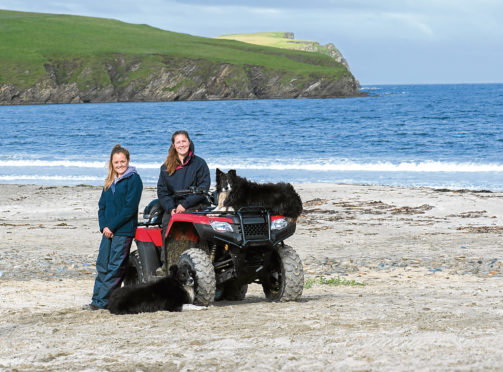The resilience of different spring barley varieties is being put to the test as part of an AHDB project.
Farmers participating in the levy body’s monitor farm programme, including the Monitor Farm Scotland project run in conjunction with Quality Meat Scotland, will carry out trials to look at heritage and modern UK spring barley varieties as well as those from Sweden and Finland.
The trial, which comprises plots in Shetland, Cornwall, Hampshire and Northern Ireland, aims to look at the resilience of different varieties grown in different conditions in the UK and challenge growers to get the most out of their crops.
Each site will grow just under an acre each of Golden Promise, Fairing, Anneli and Brage for harvest 2018.
Farmers will monitor the crop, measuring a broad lists of agronomic and harvest information.
The Shetland trial is being conducted by Kirsty and Aimee Budge – the hosts of the Shetland Monitor Farm project at Bigton Farm on the South Mainland.
The sisters currently grow just over 60 acres of Propino and Waggon spring barley.
Kirsty said: “We are interested in looking at alternative varieties to increase yields but also withstand Shetland’s weather which is our biggest challenge.
“We usually sow in April and in 2017 the barley was harvested at a grain moisture ranging from 19-25% – this was good given the unsettled weather. In 2016 the moisture was as high as 30%.”
AHDB knowledge transfer manager Emily Smith said Fairing was chosen for the trial because it is the earliest of the new varieties on the market, and it has some of the strongest agronomic features meaning it serves as a baseline for modern genomes.
She added; “Today’s modern varieties are achieving yield through increasing the growing period, which has significant issues for farmers growing in extreme conditions in marginal areas.
“We want to see how new genetics compare to old genetics, such as Golden Promise, (provided for the trial) by kind permission of McCreath, Simpson and Prentice.”
She said the Swedish and Finnish varieties of Anneli and Brage had been chosen in conjunction with the Agronomy Institute at Orkney College, which is part of the University of the Highlands and Islands.
Both varieties were chosen because other north European cereal varieties have been grown in challenging conditions in recent years, including Shetland, and they have been largely successful due to their early maturity.
Ms Smith said: “With the Monitor Farm network giving us full coverage of the UK we have the potential to do valuable testing across the full range of environmental conditions experienced by our farmers.
“Too often, technical advances are dismissed because they are not perceived to be relevant to a particular area and we need to address this if we are to help the industry innovate and move forward.”
